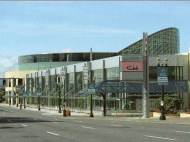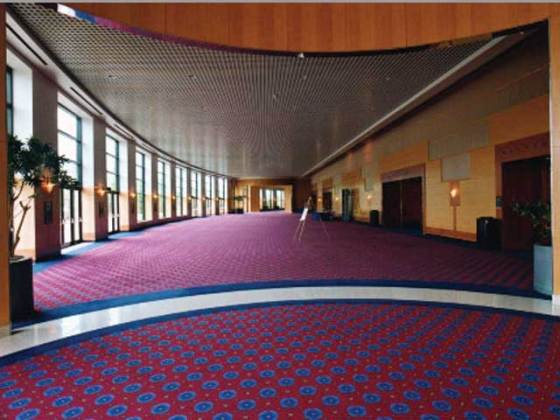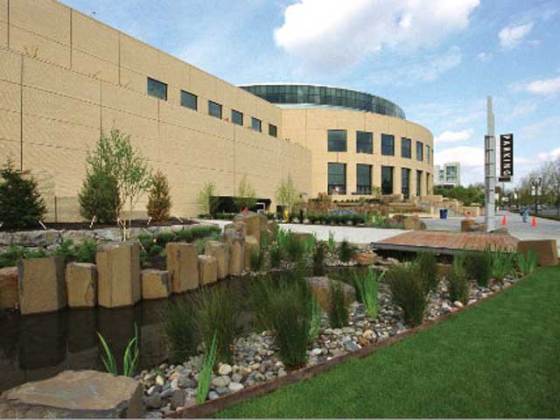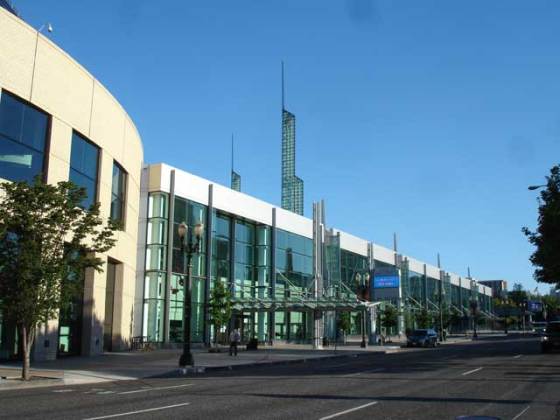Green architecture – Oregon Convention Center
 The Oregon Convention Center (OCC) is the largest convention center in the Pacific Northwest, which has led the industry in sustainable operations and business practices as the first to earn LEED-EB (LEED – Existing Building) in 2004 and in 2008, the first to be re-certified LEED-EB Silver. OCC was the first convention center to earn Salmon-Safe certification in 2007, in part due to its innovative rain garden.
The Oregon Convention Center (OCC) is the largest convention center in the Pacific Northwest, which has led the industry in sustainable operations and business practices as the first to earn LEED-EB (LEED – Existing Building) in 2004 and in 2008, the first to be re-certified LEED-EB Silver. OCC was the first convention center to earn Salmon-Safe certification in 2007, in part due to its innovative rain garden.
The building was designed by the architectural firm of Zimmer Gunsul Frasca Architects has almost 93,000 square meters (1 million square feet of space), and it hosts an average of 650 events and more than 700,000 visitors every year. The sustainable practice reduces a significant amount of resources while promoting that way of living to their clients.
The OCC rain garden is designed to serve as a catch basin and a contaminant filtering system for roof runoff before entering the nearby Willamette River. It features an extensive system that takes rainwater from the facility’s roof and filters it through a series of settling ponds and landscaping before it’s released into the nearby Willamette River .It helped them earn the Portland-based Salmon-Safe certification for their efforts to protect the Willamette River watershed and salmon habitat.
Since then, OCC has invested in landscaping improvements by adding native and drought tolerant plants and utilizing weather-sensing irrigation equipment scheduled to maximize irrigation while minimizing water use. In addition, all facility restroom fixtures have been upgraded to dual-flush toilets and low-flow sensor faucets. They use sub-metering for domestic and irrigation water uses in order to identify potential leaks which can be fixed promptly.
OCC participates in Pacific Power’s Blue Sky program as a Visionary partner, supporting renewable energy development of the region by purchasing wind power equal to 40% of their electric use. Energy use is 25% lower than the average for similar facilities, due to efficient lighting and the use of Energy Star appliances where possible. Interior and exterior integrated pest management program focuses on preventative actions to restrain the chemical pesticide use.
The lobbies in building have been made to have plenty of daylight, while the energy efficient lighting and operation practices such as minimal lighting levels during set-up/tear down and non-event hours are used to lower the energy consumption. Energy efficient HVAC management with building automation system has no use of CFC-based refrigerants. Heat island reduction is achieved with reflective roof on expansion and exterior landscaping design.
They practice sustainable lifestyle as well, by using recycled or durable service items, and by extensive solid waste management and recycling program, including office and newspaper, plastic, cans, glass, organic material (food/yard debris), cardboard, wood, metals, vinyl tablecloths, plastic shrink wrap, and magazines. Diversion rate (total amount of materials diverted from going to the landfill) of 43.6% in 2007-2008 increased to 57.13% in 2009-2010.
OCC also has a food waste composting system in place for kitchen and post-consumer waste. They collect used grease and oil from the kitchen which is then used for re-manufacturing by a service provider. The building is located at a high density area – close to mass transit, pedestrian/bicycle routes, business and urban residential districts.












Leave your response!